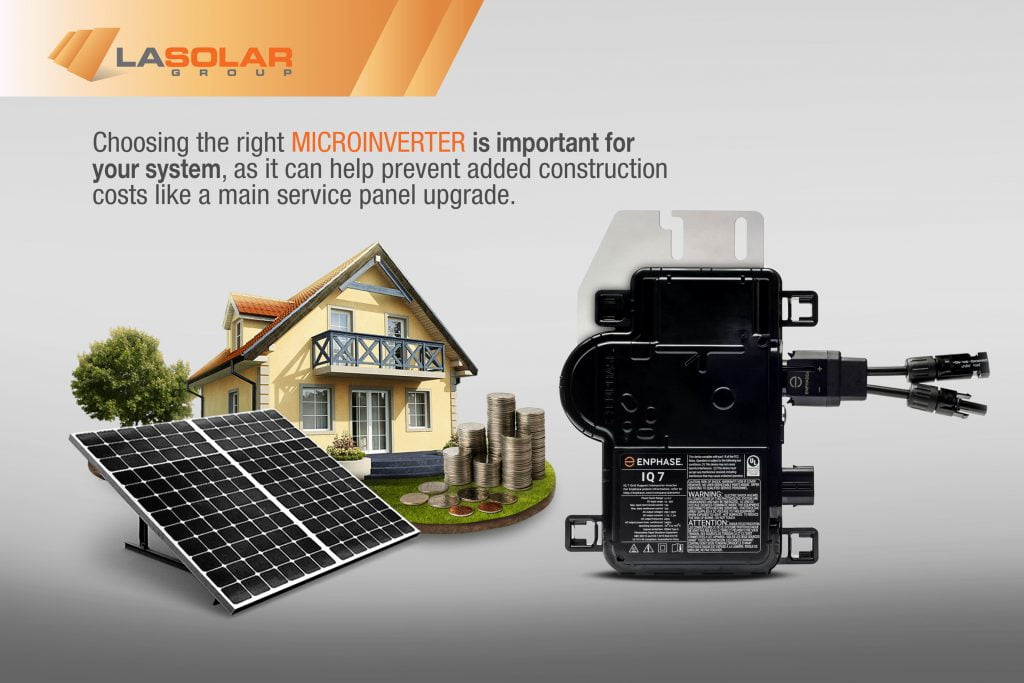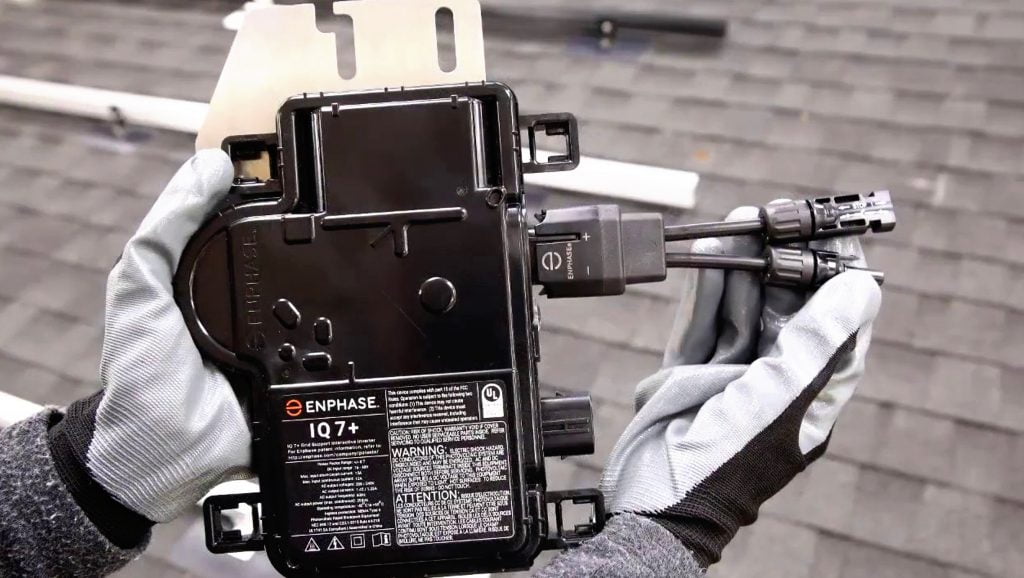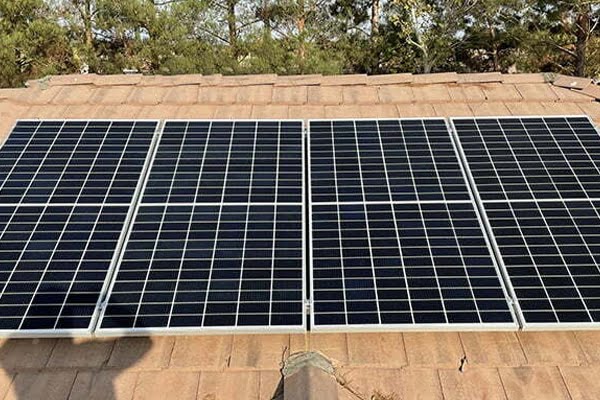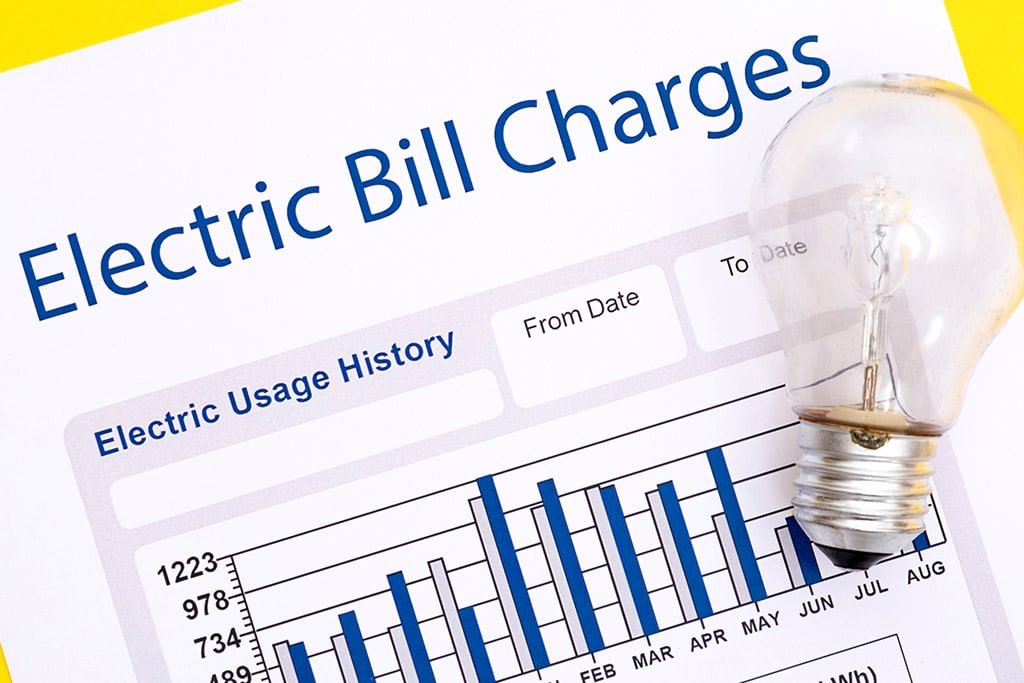Solar panel systems are an investment that should be handled with care. When choosing a solar system, there are far more components to consider than just the panels themselves. One of the most important features of a solar system is the inverter or microinverter. The microinverters’ role is to convert direct current (DC), which is collected from sunlight energy, into alternating current (AC), which is the form of electricity used to power your home. Choosing the right microinverter is important for your system, as it can help prevent added construction costs like a main service panel upgrade. Let’s take a look at how microinverters interact with your electrical main panel.
Microinverters’ Role in the Electrical Main Panel
One common cost pitfall on solar installs is a main panel upgrade. When installing solar panel systems, additional breakers and electrical loads will be added to your home or business. Sometimes, the added breaker size can exceed the maximum capacity of the electrical panel. If the breakers in your panel exceed 120% of busbar rating, building and safety authorities will not allow its continued use in many cities. If a workaround solution cannot be engineered, a main panel upgrade will be required for the solar project to pass inspections. Main panel upgrades generally add about $2000-3000 to the project, and although panel upgrades can add value to your home, unforeseen cost additives may put your budget over the edge. Main panel upgrades may even require additional construction efforts, like gas line relocation or power lines themselves needing to be upgraded. With these additional construction needs, the price tag can rapidly jump thousands of dollars.
So, how do microinverters affect electrical main panel upgrades?
Microinverters convert energy, much like traditional string inverters. However, microinverters offer some unique advantages to traditional string inverters. For example, microinverters can mitigate the effects of shade and equipment failure. If one panel gets shaded in a traditional
inverter system, then the entire connected string is affected. In this situation, if the inverter fails, then the whole system goes down. Microinverters combat this issue. With microinverters, if one panel is shaded, then only that panel has reduced output. Therefore, if one microinverter fails, it doesn’t mean there will be a total system failure. The rest of the system continues producing energy despite the reduced output of one panel.
Microinverter systems tie into your main service panel in a similar way to traditional inverters. In both microinverter and traditional inverter systems, each string will have a corresponding breaker that will add to the panel’s size. That breaker size is determined by the additional amperages of each installed inverter. That’s why microinverters are so important – they determine breaker size, which in turn will determine if there is a need for a main panel upgrade.
The ability to select from a pool of different microinverters is helpful as it allows installers to keep your solar system under the necessary operating threshold. Using the right microinverter means you can skip a main panel upgrade while still getting the most production out of your system.
Enphase has several microinverters models that may be appropriate for the solar panels you’ve chosen, each of which has a different maximum AC amperage output. With varying AC amperage output levels, you will be given some flexibility as you try to avoid the added costs of a main panel upgrade.
Let’s take a look at a few Enphase microinverter types.
Types of Enphase Microinverters
One popular option for solar inverters is the Enphase microinverter types. Enphase has continuously made improvements to their microinverter line, and as a result, they have several models that will work with higher power contemporary solar panels (think: Q-CELL, Panasonic, Solaria and LG). Current Enphase models include the IQ7, IQ7x, IQ7+, and IQ7A. Each model will possess different wattage ranges and output capabilities. The varying microinverter types will operate at different AC output amperages. The different amperages give installers some added flexibility to engineer around the main panel upgrade problem.
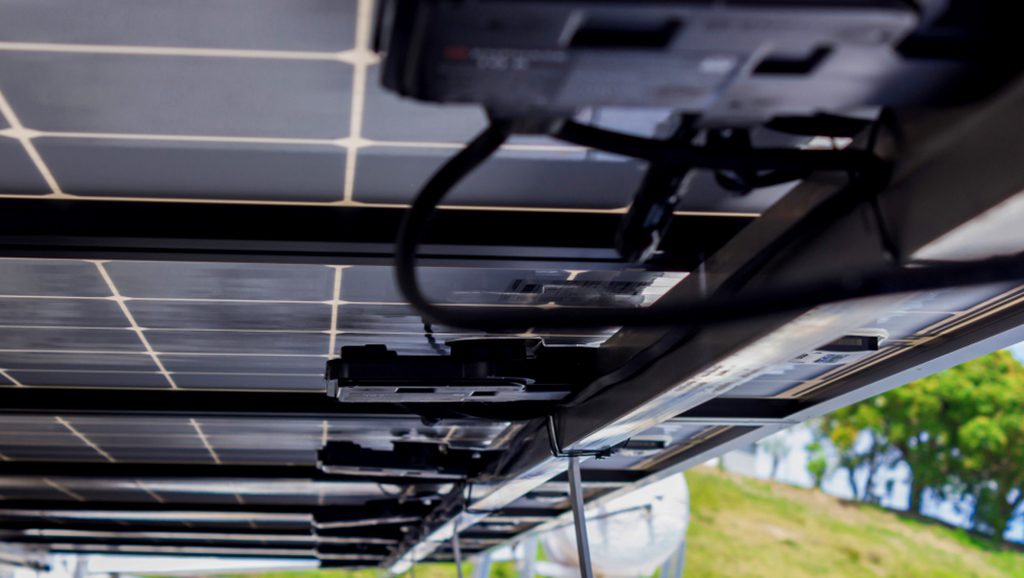
IQ7
The IQ7 microinverter is designed for 60-cell solar panels. These are a slightly older design but are still used on some modern high output panels. Fewer solar cells mean a lower voltage output per panel, and thus an inverter with a lower max AC amperage rating can be appropriate. In terms of wattage, the IQ7 will work for most solar panel models with a wattage range of 235-350W. Using IQ7 microinverters, the amperage of the AC energy output is 1amp. An output of 1A means that each inverter puts out a max of 1 amp of AC energy for home use or backfeed. Keep in mind, the amperage output number is the important variable needed for our main panel upgrade calculation. By selecting the lower-rated inverters, installers are effectively reducing the total max theoretical AC power output. In reality, you’ll rarely be able to produce that max, so choosing a lower-rated inverter option may help you avoid a main panel upgrade while keeping your practical system size about the same.
IQ7+
Comparable to the IQ7 is the IQ7+, which is designed to pair with higher output 60-cell or 72-cell modules. This means that the IQ7+ microinverter works with solar modules that are the same or slightly bigger than IQ7 alone can handle. Wattage with the IQ7+ should be within a range of 235 to 440W. The amperage of the IQ7+ will have a continuous output rating of 1.21amps. Once again, this value is the important variable for our main panel upgrade calculation. Amperage values will determine breaker size, which in turn determines main panel upgrades.
IQ7x
As the modules grow in size, the associated microinverters grow in output capabilities. The IQ7x can handle greater electrical loads, as it is designed to support 96-cell solar modules and high-efficiency panels like Panasonic or Solaria. The IQ7x wattage range is 320-460w. The IQ7x will deliver a maximum output current of 1.31amps.
IQ7A
IQ7A can be implemented in panels with 60, 66, or 72 cells. Think of it like the “+” version of the IQ7X. It works within a wattage range of 295-460w. The continuous amperage output of the IQ7A will be 1.45a. The IQ7A works great with the highest output panels like Solaria’s, which is over 400W.
Enphase Microinverter Examples
Now that we know the differences between the IQ7 types, we can evaluate how these different types will interact with your electrical main panel. Here are some examples to make things easier.
Let’s say you have a 100a main service panel. That means your main service panel can handle an output current of 100amps. Because your home loads total 100 amps, you only have 20amps of available space left before requiring a main panel upgrade. Your account manager says you need about 16 Q-CELL 320W solar panels to offset your electrical usage. While these panels could typically be paired with an IQ7A, 16 panels multiplied by the 1.45a rating of the IQ7A, then multiplied by 1.25 equals 29 (16 x 1.45a x 1.25 = 29). This equation means you’d need to add a 30 amp breaker to your main panel to support this system, but you only have 20 amps of available space. This puts you over the panel threshold, so you will require a main panel upgrade. Unexpected panel upgrades can stall and add cost to your project.
If we choose the IQ7, then the math changes to 16 panels multiplied by 1, which is the rating of the IQ7, then multiplied again by 1.25 to equal 20 (16 x 1 x 1.25 = 20). This means that only a 20 amp breaker would be needed, and the panel upgrade could be avoided while effectively keeping your real-life solar generation consistent.
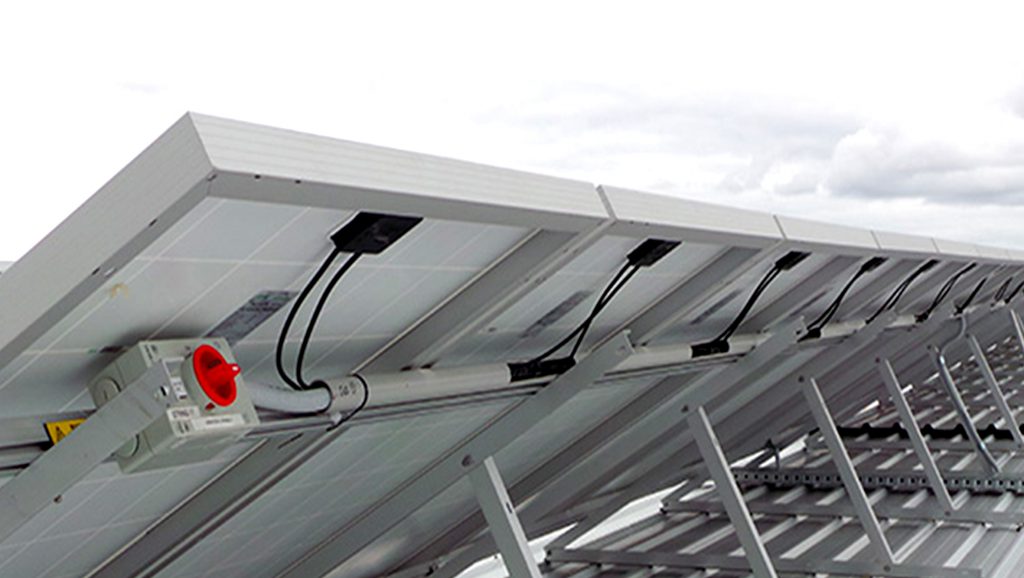
It’s important to keep in mind that while main panel upgrades are an additional expense, they provide their own unique advantages. With the rise of electric vehicle usage and home battery storage solutions, upgrading your main panel means you will be able to hold, store, and use more energy regularly.
Here’s another example.
Let’s say you have a 200a main service panel with a 200a rated bus, and you’ve chosen to install LG solar modules to your home or business. LG modules are made up of 60 cells and possess a 335W output. Based on the cell count and output level, the most usable microinverters will be either the IQ7, IQ7+, or IQ7A. If you choose to go with the IQ7A, then each module will output up to 1.45a of power, which is the standard output level within that type.
Say your system size is 40 panels. If you choose the IQ7, the total max amperage output rating is 40amps. Using the same method in the first example, we can determine that this would require a 50 amp breaker: 40 x 1 x1.25 = 50.
However, if you choose the IQ7A, the formula changes to 40 x 1.45 x1.25 = 72.5, or a 75 amp breaker. Depending on the number of loads in the panel, this could be the difference between a largely unnecessary main panel upgrade from 200a to 225a for almost no real solar gains.
That’s why Enphase is a great choice for engineers looking for some extra flexibility in avoiding unnecessary infrastructure upgrades without having to change system sizes for customers.
Going Solar
As you move forward in your solar journey, it’s important to have all the facts about solar components. Microinverters play a huge role in power output and can be the difference between buying a new main panel or continuing on with your old one. While a main panel upgrade is an added cost, it can benefit you in the long run. A new panel will add increased value to your home while also providing increased electrical capacity for your energy needs. If you do not feel compelled to invest in a new electric panel, then understanding the differences between microinverters is a necessity. Choose the wrong microinverter, and you may have no choice but to invest in a new electrical main panel.
Solar panel systems are an excellent investment with a lot of moving parts. It’s important to have all the facts to get the best system for your unique situation. Now that you understand the difference between popular microinverters for solar panels, you can make educated decisions regarding your home energy needs.


